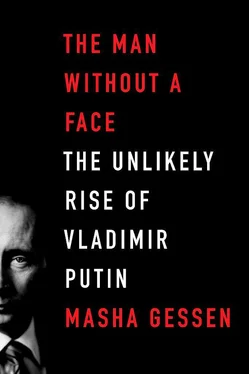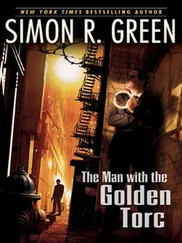On the second day of the coup, the strangest thing happened. Marina Salye was manning the phones at the city council’s makeshift resistance headquarters when Yeltsin’s vice president, General Alexander Rutskoy, called and started screaming into the phone: “What the hell did he do? He read a decree? What the hell did he read?” It took a few minutes for Salye to figure out what Rutskoy was talking about, and it took her much longer than that to understand what it meant. Rutskoy had issued a decree removing General Samsonov from his post as the head of the Leningrad Military District and replacing him with Rear Admiral Shcherbakov, Sobchak’s deputy. Replacing a hard-liner loyal to the GKChP with someone loyal to the democratic mayor seemed like a logical step, and one that Sobchak should have welcomed. Except it upset Sobchak’s carefully constructed hedge and would in essence have forced him to take Yeltsin’s side not only in his speeches, which he had done, but also in his actions. So Sobchak, the lawyer, fudged the language in Rutskoy’s decree, which he read at his press conference, rendering the document invalid.
There was a barrage of decrees, statements, addresses, and orders coming from both sides of the barricades. It was a war of nerves rather than a legal battle, for any organization, or any person, obeyed only the decrees issued by the authority he recognized. This was why Yeltsin could not just call Samsonov and order him to clear out of his office: Samsonov reported to the GKChP, not to Yeltsin. So the democratic government in Moscow had hoped that Sobchak, by reading the decree aloud, with all his eloquence and all his authority, would invest the document with enough power that the troops stationed in Leningrad would believe Rear Admiral Shcherbakov to be their new commander. But when Sobchak read the decree, he replaced the job title now assigned to Shcherbakov with something called “top military chief,” a term no one recognized, a fictitious job from some parallel world that cast no doubt on General Samsonov’s authority. This was Sobchak’s way of keeping his own situation undefined and stable.
AND THEN THE COUP CRUMPLED. After a two-day standoff in the center of Moscow, most of the troops failed to move on the White House, and the few armored personnel carriers that did were stopped by a handful of unarmed volunteers and the barricades they had constructed from sidewalk stones and overturned electric buses. Three people died.
Gorbachev returned to Moscow. The incredibly fast process of taking apart the Soviet Union commenced. At the same time, the Russian and Soviet governments launched the process of taking apart the Soviet Union’s most powerful institution, the KGB, although this effort would prove much more complicated and much less efficient.
On August 22, the Russian Supreme Soviet passed a resolution establishing a white, blue, and red flag as the new flag of Russia, replacing the Soviet-era red flag with its hammer and sickle. A group of city council members, led by Vitaly Skoybeda—the one who had slugged the hard-liner three days earlier—set off to replace the flag in Leningrad. “The flag was on a corner of Nevsky Prospekt, over the Party headquarters,” Yelena Zelinskaya, the samizdat publisher, recalled in an interview years later. “It was the most noticeable place in the city. They started taking it down, a group of people including journalists and city council members. An orchestra showed up for some reason; it was the brass band of the military school. And a television crew was there filming. They lowered the red flag carefully. As the orchestra played, they raised the tricolor. The man who took down the flag was standing right there among us, on Nevsky. So there we were, a group of people, standing in the street, with an orchestra playing, and this man with a red flag in his hands, and we were suddenly totally lost as to what to do. Here we had a flag that for eighty years had been the symbol of the state; we had all hated it but we had also all feared it. And then one of our staff members says, ‘I know what to do: we are going to give it back to them.’ The district Party headquarters was across the street. And he grabbed the flag and ran across the Nevsky, without looking left or right. Cars stop. The orchestra is playing a march, and he is running across the very wide Nevsky, and just when the orchestra is playing the last note, he tosses the flag as hard as he can against the Party headquarters doors. There is a pause. And then the door opens slowly just a crack; a hand reaches out and quickly yanks the flag inside. The door closes. This was the highlight of my entire life. I saw the Russian flag raised over Nevsky.”
Five days after the coup began, Moscow held a funeral for the three young men who died trying to stop the troops. Three Leningrad politicians, including Salye, flew in for the ceremony. They joined Nikolai Gonchar, chairman of the Moscow City Council and a prominent democrat, at the head of the funeral procession. “The procession kept starting and stopping,” Salye told me later. “And every time we stopped, Gonchar turned to me and said, ‘Marina Yevgeniyevna, what was it?’ He said it about ten times.” By the end of the day, Gonchar had Salye convinced that the coup was not what it had seemed.
So what was it? Why did the coup, so many months in the making, fall apart so easily? Indeed, why did it never really take off? Why were the democratic politicians, with the exception of Gorbachev, allowed to move around the country freely and have telephone contact? Why were none of them arrested? Why, in the three days that they ostensibly held power in the Soviet Union, did the hard-liners fail to capture the main communication or transportation hubs? And why did they fold without a fight? Was the coup simply a mediocre attempt by a group of disorganized failures? Or was there something more complicated and more sinister going on? Was there, as Salye ultimately came to believe, a carefully engineered arrangement that allowed Yeltsin to remove Gorbachev and broker the peaceful demise of the Soviet Union but also placed him forever in debt to the KGB?
I happen to think it was neither—and both. Even while it was going on, on either side of the barricades, different people were telling themselves different stories about the coup. When it ended, the nominal winners—the people who fought for democracy in Russia—failed to shape or advance a story that would have become the common truth of the new Russia. Everyone was thus left with his or her individual narrative. In the end, for some people those three days in August 1991 remained a story of heroism and the victory of democracy. For others, they remained—or became—the story of a cynical conspiracy. Which story is right depends on which of them belongs to the people who hold power in Russia. So the question becomes: What is the story that Vladimir Putin tells himself about the coup?
OVER THOSE THREE DAYS IN AUGUST, Putin was even less visible than usual. He stayed by Sobchak’s side at all times. It was Sobchak’s other deputy, Shcherbakov, who had the visible role, who acted as both spokesman and point man: he stayed behind in the mayor’s office, night and day and night again, as Sobchak, accompanied by Putin, hid in the bunker. We know that Sobchak was playing both sides of the barricades; in fact, the barricades may have bisected his inner circle. Early in the crisis, Shcherbakov discovered that someone had placed a tiny tracking device on his lapel. On the morning of August 21, Shcherbakov remembered, “I had pushed five chairs together in my office and lain down to sleep on them. I woke up because I sensed someone looking at me. Anatoly Alexandrovich [Sobchak] had returned. ‘Go back to sleep, Vyacheslav Nikolayevich,’ he said. ‘Everything is fine and good. Congratulations.’ I immediately reached for my lapel to feel for the bug—and it was no longer there. So someone in my immediate circle had placed it and then removed it so it would not be found. Someone who was working for the other side.”
Читать дальше












